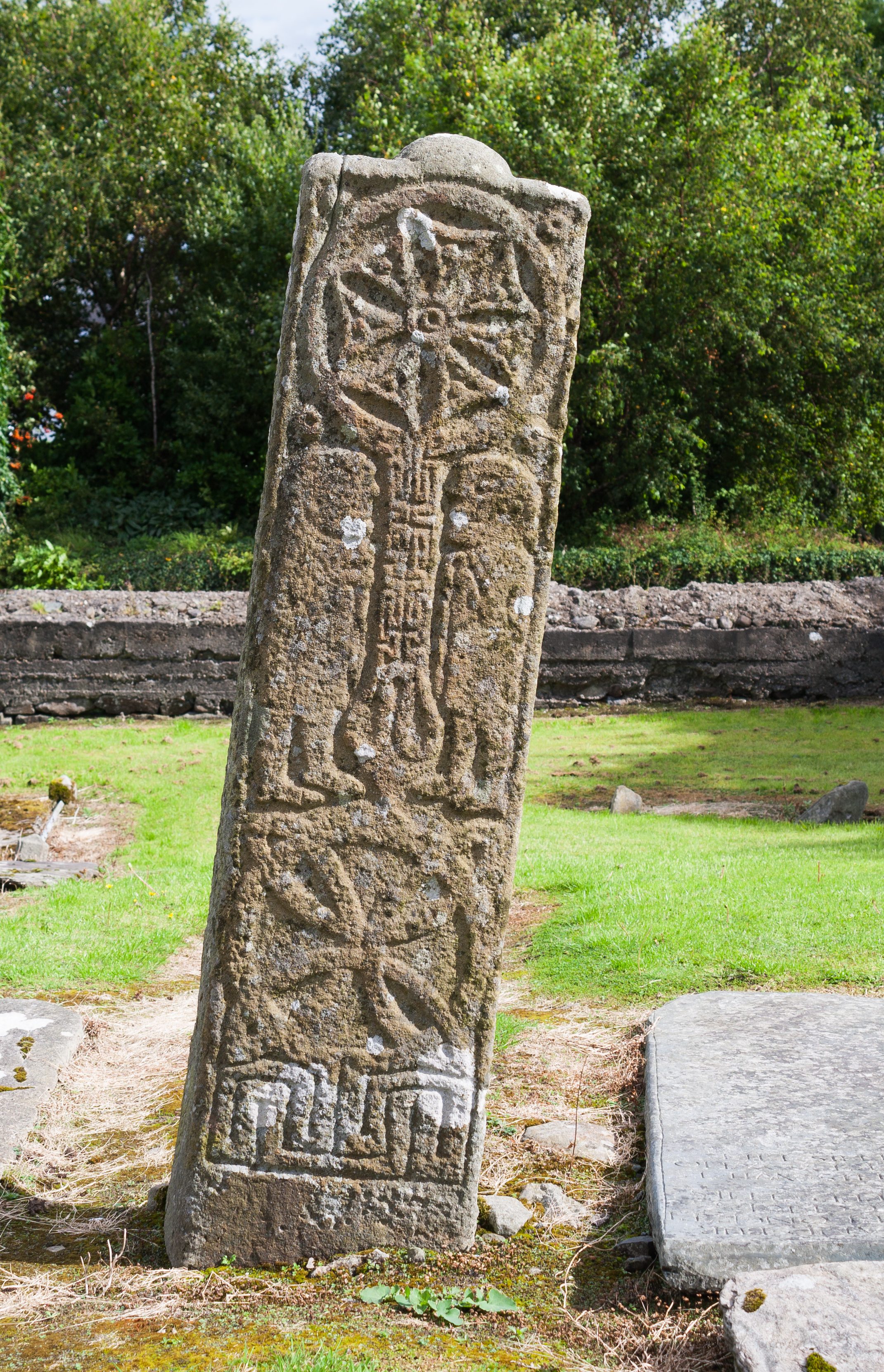Carndonagh Stones on:
[Wikipedia]
[Google]
[Amazon]



 The Carndonagh stones are a set of five sculpted stones in the town of
The Carndonagh stones are a set of five sculpted stones in the town of



 The Carndonagh stones are a set of five sculpted stones in the town of
The Carndonagh stones are a set of five sculpted stones in the town of Carndonagh
Carndonagh (; ) is a town on the Inishowen peninsula in County Donegal, Ireland, close to Trawbreaga Bay. It is the site of the Carndonagh stones. The Irish name, ''Carn Domhnach'', means "the cairn or mound of the church".
Amenities
The tow ...
, County Donegal
County Donegal ( ; ) is a Counties of Ireland, county of the Republic of Ireland. It is in the Provinces of Ireland, province of Ulster and is the northernmost county of Ireland. The county mostly borders Northern Ireland, sharing only a small b ...
. All five stones are on the grounds of Donagh Church. The group consists of one free-standing high cross
A high cross or standing cross (, , ) is a free-standing Christian cross made of stone and often richly decorated. There was a unique Early Medieval tradition in Ireland and Britain of raising large sculpted stone crosses, usually outdoors. Th ...
with two smaller, attendant pillars; a free-standing pillar known as the "Marigold Stone"; and a decorated door lintel
A lintel or lintol is a type of beam (a horizontal structural element) that spans openings such as portals, doors, windows and fireplaces. It can be a decorative architectural element, or a combined ornamented/structural item. In the case ...
. The pieces apart from the lintel are thought, on the basis of their stylistic similarity, to be roughly contemporaneous. These stones are generally now dated between the 9th and 10th century, though a minority date them to the 7th century on the basis of stylistic comparisons with the Book of Durrow
The Book of Durrow is an illuminated manuscript gospel book dated to that contains the Vulgate Latin text of the four Gospels, with some Irish variations, and other matter, written in Insular script, and richly illustrated in the style of Ins ...
.
The north pillar has a carving of a seated harpist and a outline of a warrior. The south pillar has a figure similar to the Janus (two headed) figure found on Boa Island
Boa Island () is an island near the north shore of Lower Lough Erne in County Fermanagh, Northern Ireland. It is from Enniskillen town. It is the largest island in Lough Erne, approximately long, and relatively narrow. The A47 road (Northern ...
. The Marigold Stone in the nearby graveyard is 5.5 feet high and 1.4 feet wide and is dated to around to the year 600. The name comes from the seven petalled flower on its west side. The east side shows Christ with arms outstretched and a tripartite knot at its base.
French scholar Françoise Henry
Françoise Henry (16 June 1902 – 10 February 1982) was a scholar of early Irish art, archaeologist, and art historian. While at University College Dublin (UCD), she founded the Department of History of European Painting in 1965, and was head u ...
(who dated the stone to the 7th century) made the Carndonagh high cross famous by citing it prominently in her theory of the origin of Insular high crosses. She believed that high crosses gradually emerged from carved slabs (such as the St Mura Cross at Fahan
Fahan (; pronounced 'Fawn'. ) is a district of Inishowen in the north of County Donegal, Ireland, located south of Buncrana. In Irish, Fahan is named after its patron saint, Saint Mura, first abbot of Fahan, an early Christian monastery.
Hi ...
) and that the Carndonagh high cross "marks the final victory in the attempt to free the cross from the slab". This theory gained few supporters, with later archaeological evidence substantially refuting it. Scottish archaeologist Robert B. K. Stevenson sharply criticised her interpretation of the Carndonagh stones.
References
Further reading
* Harbison, P. "A group of Early Christian carved stone monuments in County Donegal" in Higgit, J. (ed.) ''Early medieval sculpture in Britain and Ireland''. Oxford (1986), pp. 49-71 * Henry, F. ''La Sculpture Irlandaise pendant les Douze Premiers Siècles de l'ère Chrétienne''. Paris (1932), pp. 201ff * Roth, U. "Studien zur Ornamentik frühchristlichen Handschriften des insularen Bereich: von den Anfängen bis zum Book of Durrow" ''Bericht der Römisch-Germanischen Kommission''. Vol. 60. Berlin (1979), pp. 5-226. * Walsh, N. "The Early Medieval sculpture at Carndonagh, Co. Donegal: iconography, context, date". MLitt thesis, NUI, Galway (2003)External links
* * * {{coord, 55.24996, -7.27207, format=dms, type:landmark_region:IE, display=title Archaeological sites in County Donegal High crosses in the Republic of Ireland Outdoor sculptures in Ireland Sculptures of the Crucifixion of Jesus